You will need
- A wide baking tray filled with 2 kg of sand
- 1 tablespoon of bicarbonate soda
- 4 tablespoons of icing mixture (also known as powdered sugar or confectioners’ sugar)
- 50 mL of ethanol, lighter fluid or methylated spirits
- A BBQ lighter
- Bowl & spoon
- Fire extinguisher, fire blanket or running water & bucket nearby.
Adult help is essential! Do not run in windy conditions!
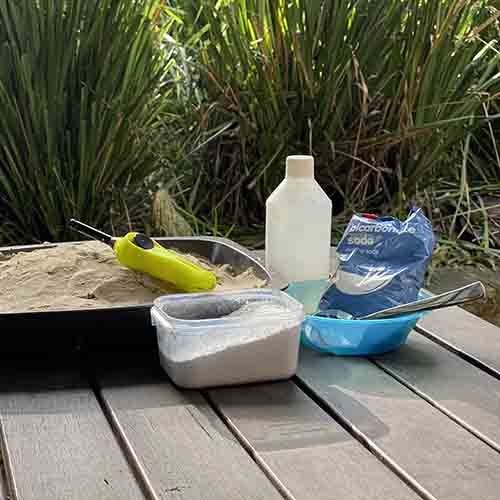

This step is for adults!
Get an adult to pour roughly 20mL of methylated spirits, lighter fluid or ethanol into the indentation in the sand.
Once wet, add small amounts of methylated spirits around the edge of the hole as well (no more than 30mL).
Danger: do not use more than 50mL methylated spirits in total. Do not run in windy conditions!
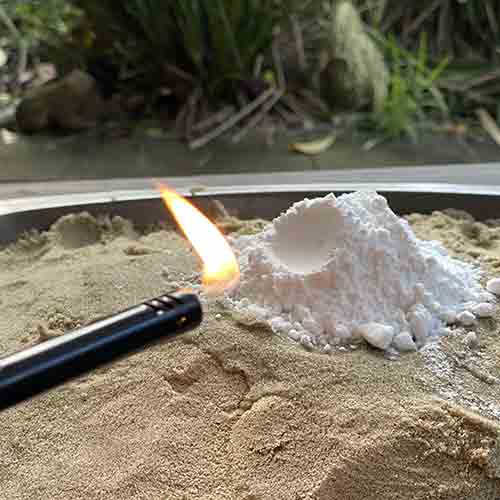
This step is for adults!
Firstly, ensure that your fire extinguisher, fire blanket or bucket of water is ready to go nearby.
Use the BBQ lighter to light the edge of the base of the icing mixture & bicarbonate soda pile.
Be careful – this should only be done in still conditions without any wind or drafts to blow on the flame.
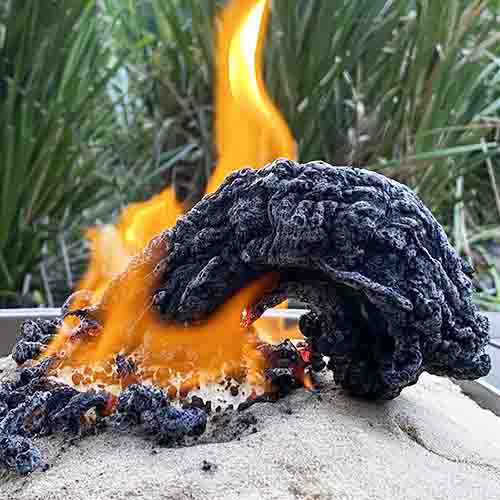
Watch this under adult supervision
The carbon snake will form a column and rise upwards until falling to the side under its own mass.
The sugar pile will continue to burn until all of the methylated spirits is used up and the outer layer of white powder is black. This process will take around 20 to 30 minutes, depending on the amount of methylated spirits that you used.
Don’t touch the carbon sugar snake until the flame has gone out and you have waited at least 10 minutes for it to cool down.
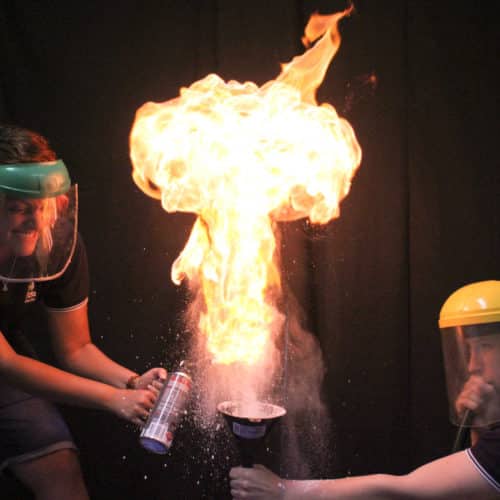
School science visits since 2004!
– Curriculum-linked & award-winning incursions.
– Over 40 primary & high school programs to choose from.
– Designed by experienced educators.
– Over 2 million students reached.
– Face to face incursions & online programs available.
– Early learning centre visits too!
What is going on?
There are three chemical reactions going on in this science demonstration.
- When sugar burns with oxygen, it produces carbon dioxide and water. The carbon dioxide gas and the water gas is what pushes the carbon snake upwards. The combustion of sugar can be written in the following balanced chemical reaction:
C12H22O11 + 12O2→ 12CO2 + 11H2O - Some of the sugar doesn’t completely combust into carbon dioxide & water. Instead, the heat causes the sugar to break down into our carbon and water. The carbon is the component of the snake that makes it black.The thermal decomposition of sugar can be written with the following balanced chemical reaction:
C12H22O11 → 12C + 11H2O - The bicarbonate soda also decomposes in this experiment. In this case, the bicarbonate soda breaks down to form sodium carbonate, water as a gas and carbon dioxide gas. The sodium carbonate combines with the carbon in the reaction above that expands as the hot gases pass through it. The thermal decomposition of bicarbonate soda can be written in the following balanced equation:
2NaHCO3 → Na2CO3 + H2O + CO2
Variables to test
- Try changing the ratios of the icing mixture and the bicarbonate soda. Does this make a difference?
- If there is no indentation in the sand, will the snake form?
Chemistry Show
Years 3 to 6
Maximum 60 students
Science Show (NSW & VIC)
60 minutes
Online Class Available
...tick, tick BOOM!
Years K to 6
Maximum 240 students
Science show (NSW, ACT & VIC)
60 minutes
Space Science Parties
Launch rockets!
Make 'Alien' slime!
Discover how spaceships work
All about our cosmos and more
From $395 inc. GST
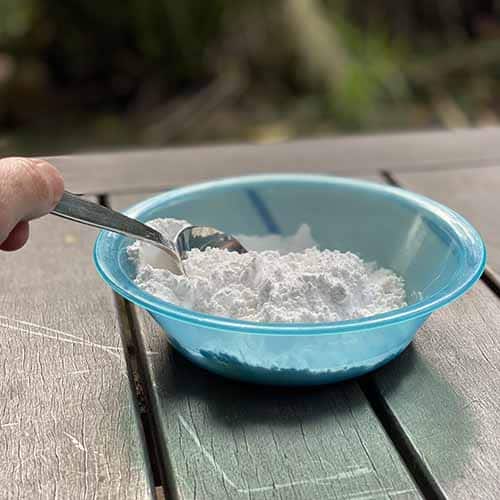
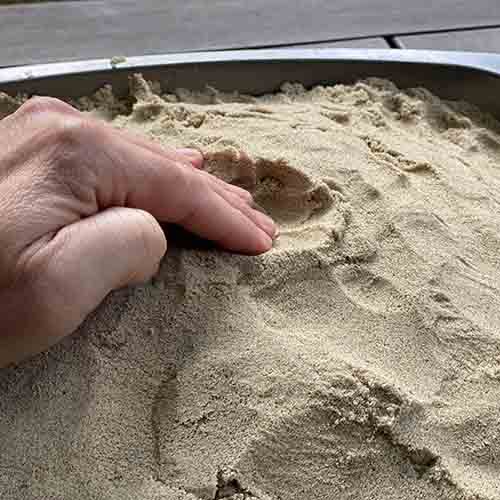
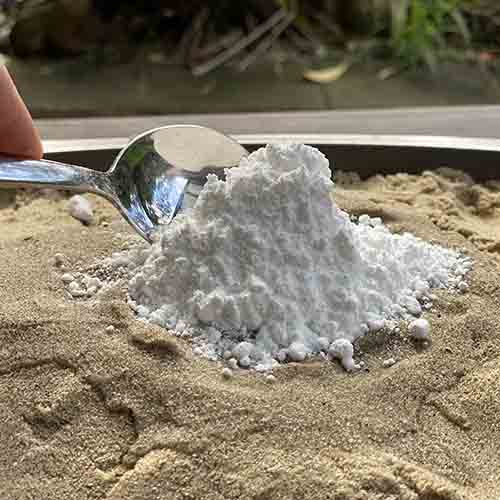
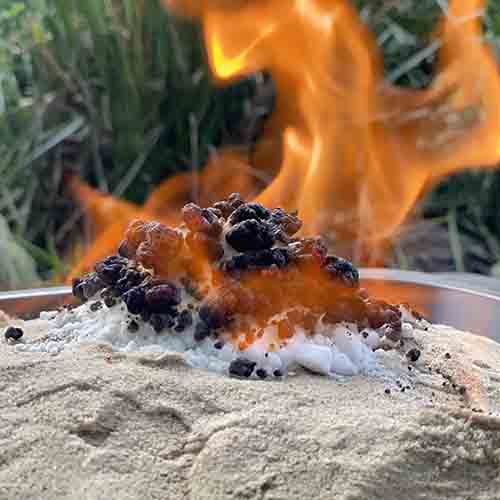
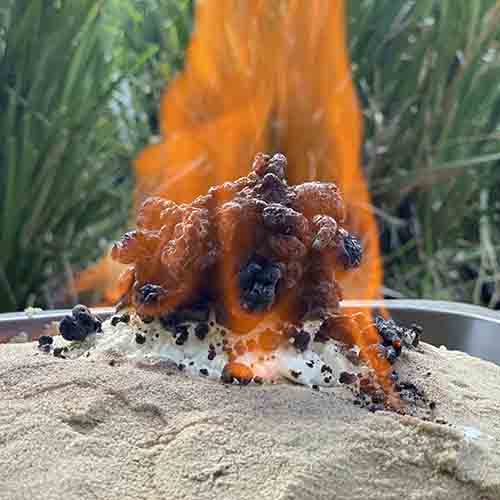
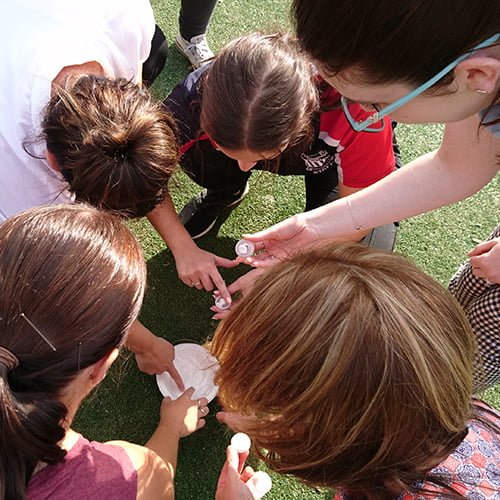


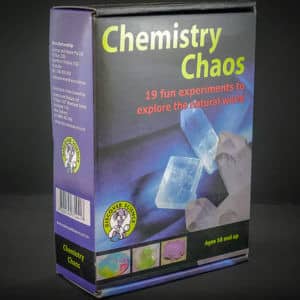



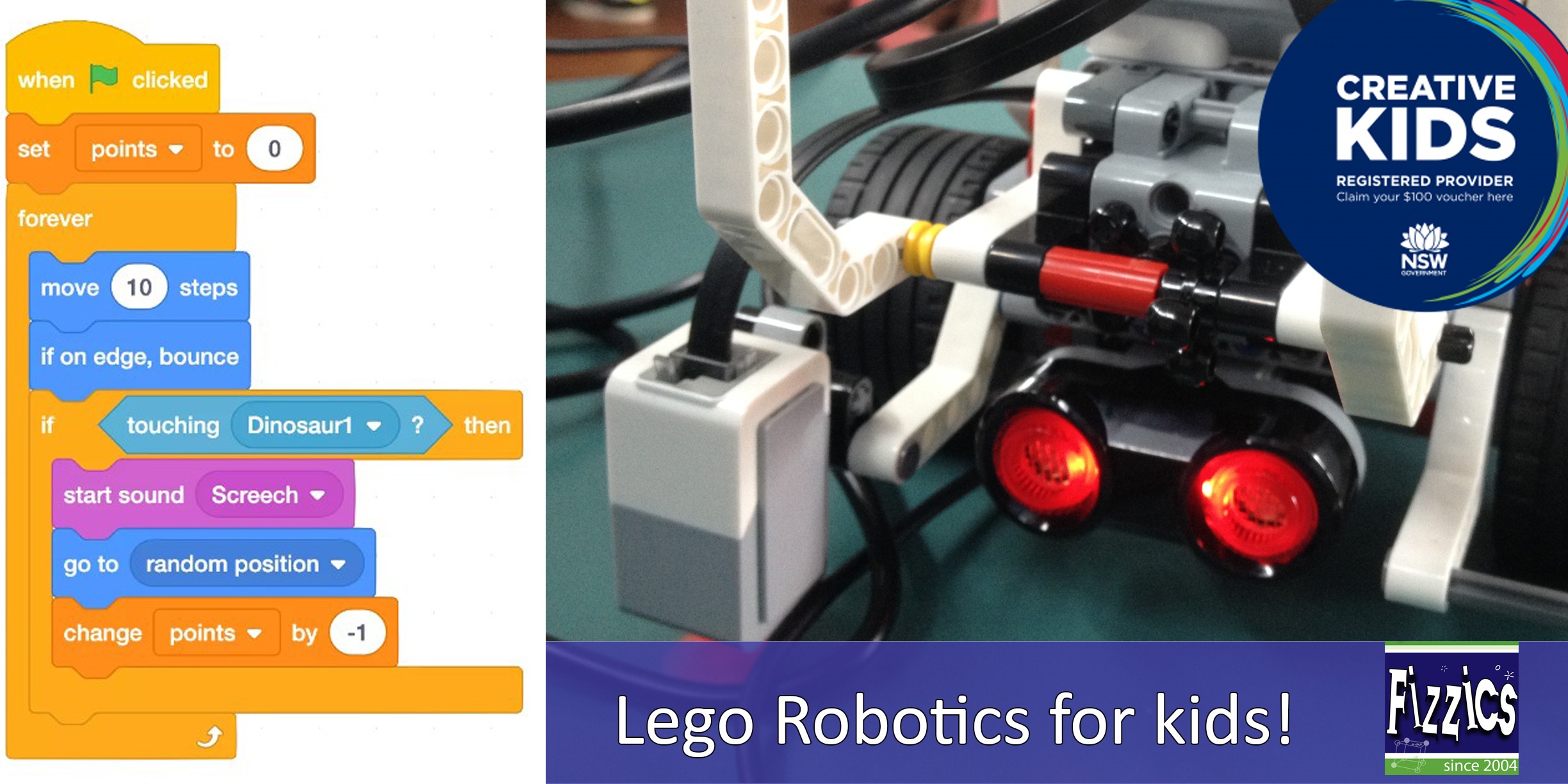

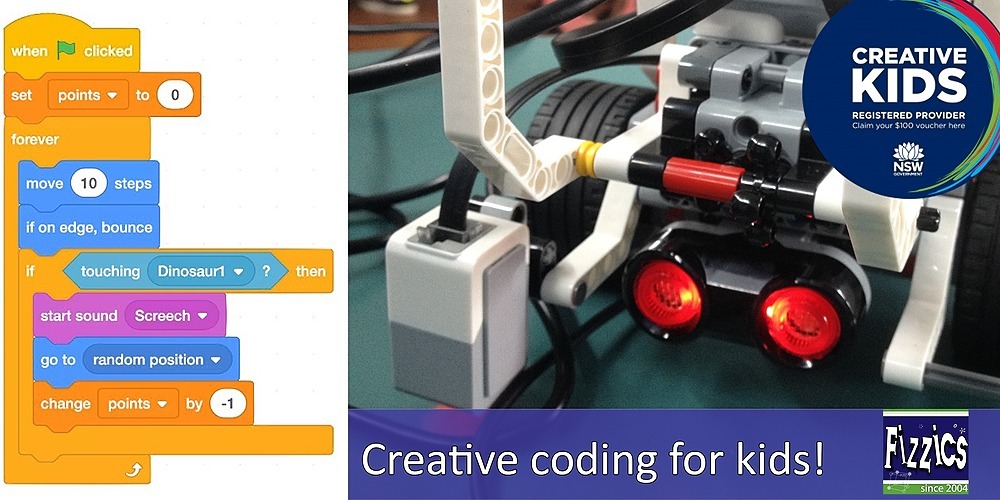
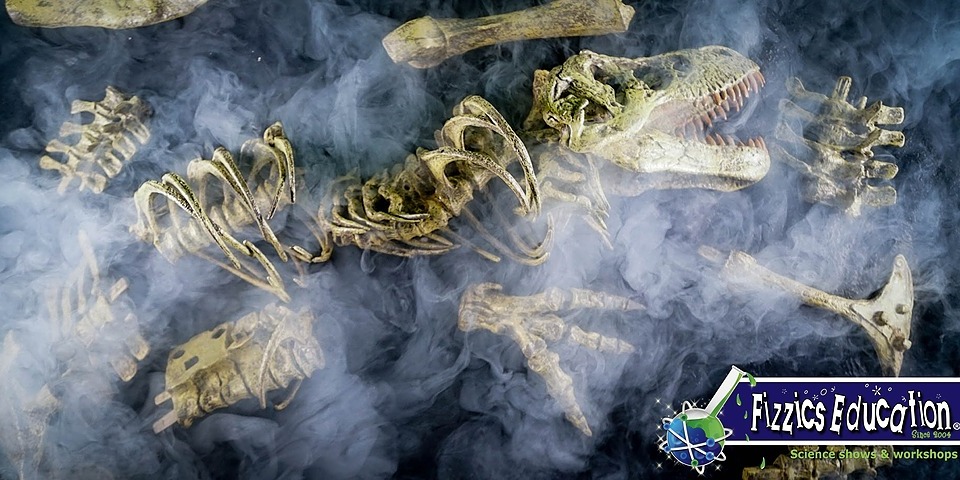












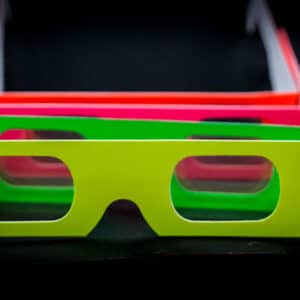
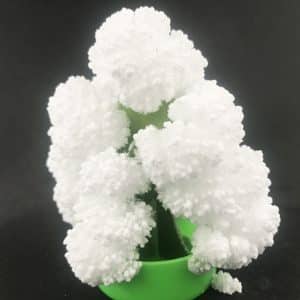


that is so so so so cool